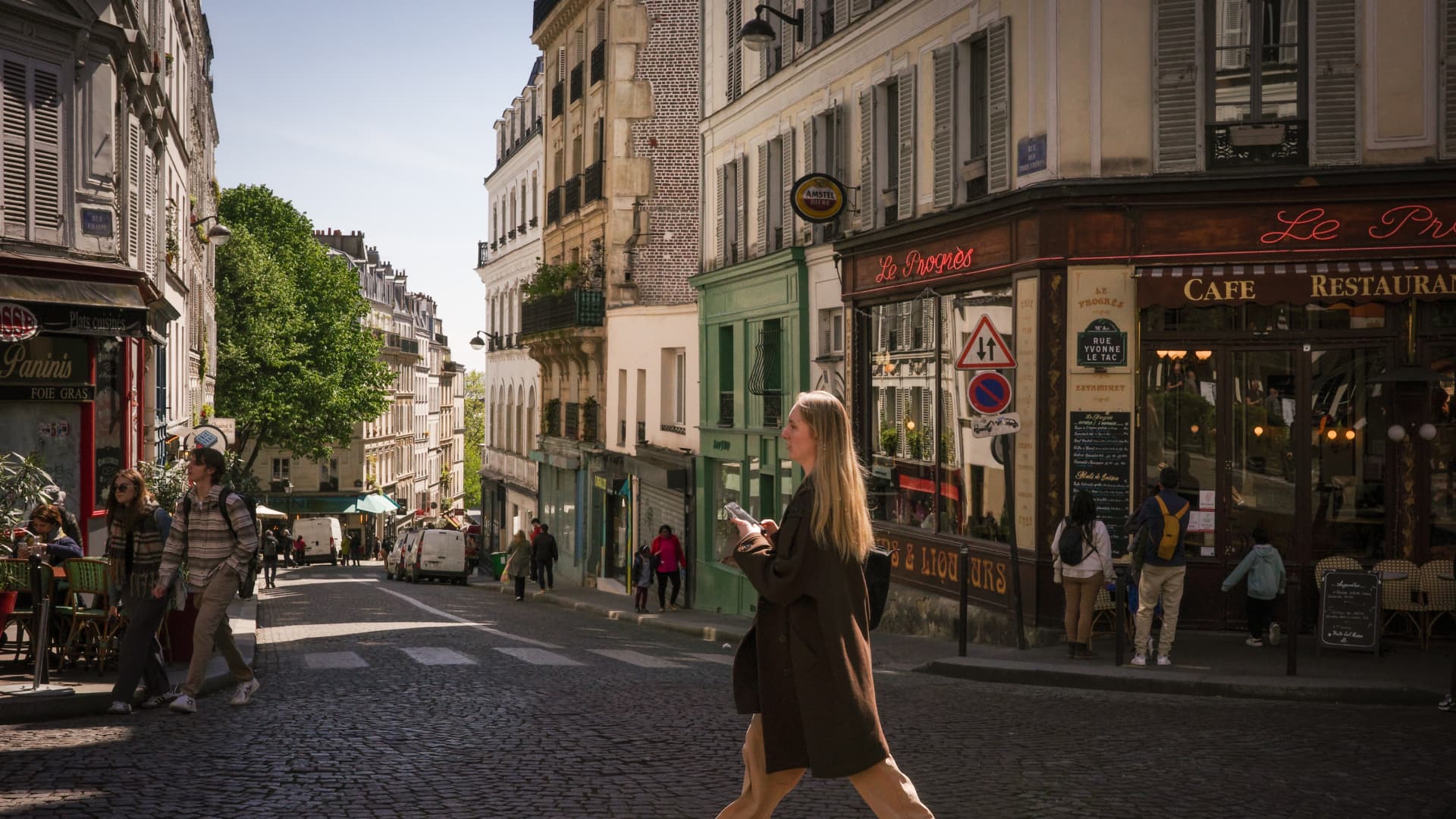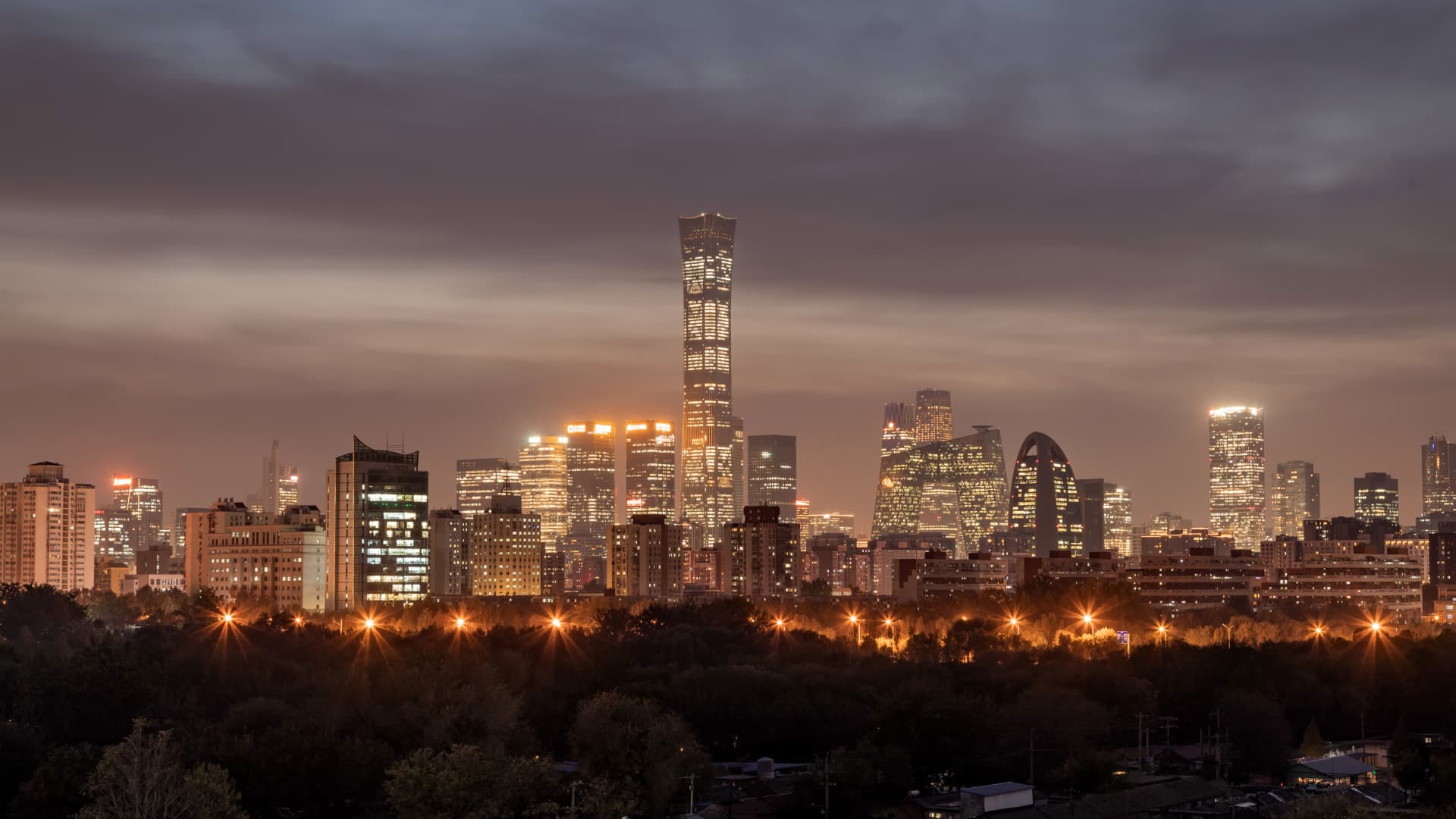
A night in China’s Guizhou province at the Cliff Hotel pictured here costs about $83, according to Trip.com. The hotel was built in 2023 with 34 rooms.
Photo only | Photo only | Getty Images
BEIJING – Chinese travelers are increasingly choosing cheaper domestic destinations over foreign tourist attractions.
Only 14% of high-income households that traveled internationally last year plan to travel abroad again in 2024, according to a survey released this month by consulting firm Oliver Wyman. The segment includes families in mainland China who earn at least 30,000 yuan per month ($4,140, or about $50,000 per year).
The top reason for preferring their home country was “abundant domestic travel options,” followed by “too expensive” international travel, according to the survey.
The average cost per person for a trip within mainland China is less than 1,000 yuan, compared with several thousand yuan for a trip to Hong Kong or Japan, Oliver Wyman said.
Local tourism has been a bright spot in China’s recovery from Covid-19 controls ended at the end of 2022. Travel booking site Trip.com said that in 2023, bookings for rural destinations in China increased 2.6 times compared to pre-pandemic levels.
During a holiday this year from May 1 to 5, travel and domestic tourism revenue rose compared to pre-pandemic levels in 2019, official data showed. International travel was slightly below 2019 levels, according to a CNBC analysis of official figures.
In mainland China, smaller cities such as Yangzhou, Luoyang, Qinhuangdao, Guilin and Zibo recorded the fastest growth in tourism bookings during the May holidays, Oliver Wyman said.
“This year, domestic tourism will exceed pre-pandemic levels,” said Ashley Dudarenok, founder of Chinese digital consultancy ChoZan.
She expects Chinese outbound travel to take longer to recover, in part because “the feeling that the rest of the world is crazy and uncertain is even stronger than in 2023.”
In contrast, over the past two years, a record number of people in the United States have applied for passports to travel abroad. According to a Skyscanner report, 85% of U.S. travelers plan to take at least as many international trips this year as they did in 2023, if not more.
U.S. and Chinese officials held a summit in the city of Xi’an last week to promote tourism between the two countries.
Once you go viral, thousands of tourists will show up at your doorstep.
Ashley Dudarenok
ChoZan, founder
It is unclear to what extent tourist interest in less developed parts of China will remain and whether this will result in sustainable growth. However, the short-term impact on some places is significant.
The southern Guangxi Autonomous Region, home to the famous limestone hills of Guilin, issued a plan this year to boost consumption through more advertising and tourism subsidies.
Officials said the region’s tourism revenue rose nearly 24% year-on-year to 258.18 billion yuan in the first quarter. Local authorities said subsidies for performing arts by local governments helped generate 48.3 million yuan in ticket sales to 230,000 people, boosting about 460 million yuan in economic activity.
An approximately 2.5-hour flight east of Guangxi takes you to the Nanjing City Wall tourist attraction. According to local media, it received nearly 1.3 million visitors in the first quarter and generated revenue of 19.2 million yuan – twice as much as in 2019.
Competition for media attention
Local governments outside China’s major cities are stepping up efforts to attract tourists, particularly through social media.
Guangxi officials said earlier this month that promotional videos for apps such as ByteDance’s Douyin and Xiaohongshu, known in English as “Little Red Book” or “Red,” had reached millions of viewers.
“They’re trying to go viral, they’re trying to incorporate their community and their cultural heritage and put everything online,” Dudarenok said. “Once you go viral, you will have thousands of tourists on your doorstep.”
People flocked to the city of Zibo in the eastern province of Shandong after the spit culture gained traction on social media last year. Similarly, three million visitors flocked to the city of Harbin during the three-day New Year’s Eve holiday after its ice sculptures and unique Nordic customs gained traction on social media.
Television programs about specific regions have also helped boost tourism.
Thanks to a television drama set in Altai, the remote part of far-western Xinjiang province saw a nearly 38% increase in visitors in the first three days of this year’s May holidays compared to last year, according to iQiyi, which released the mini-series.
“The TV shows are a big draw,” Dudarenok said, adding that “food is always the main reason for Chinese tourists to travel.”
China’s extensive network of high-speed trains and flights has made it easier for people to visit small towns, even for just two or three days.
Booking of domestic flight tickets possible Trip.com rose 30% in the first quarter compared to a year earlier, the company said last week. It noted that Chinese consumers now place more value on “emotional fulfillment,” driving interest in personalized travel.
“Intensifying marketing efforts in many provinces has effectively encouraged travelers to explore different destinations,” Trip.com management said in its earnings call, according to a FactSet transcript.
Businesses and local governments are working together in other ways to increase awareness, if not sales.
Officials from tourist attractions and local governments have contacted the Miss Tourism Asia pageant for promotions, said Yang Hua, president of the organizing committee.
“Currently, China’s domestic tourism industry is relatively scattered,” Yang said in Mandarin, translated by CNBC. He hopes to create destination-specific events for cities that can attract visitors in the next few years.
Miss Tourism Asia shot a promotional fashion video of contestants in the desert around the city of Aral in Xinjiang last year and held the beauty pageant final on Jan. 1, 2024 in the southern city of Dongguan in Guangzhou province.
Chinese consumers’ current preference for domestic travel means a full recovery in international travel to 2019 levels is unlikely to occur until the end of 2025, half a year later than previously forecast, according to Oliver Wyman.
Longer term, Dudarenok believes international tourist destinations will need to improve their experience to keep pace with the emergence of stylish, modern hotels and other travel services in China.
“Chinese tourists [are] “Not so easy to please,” she said.
—CNBC’s Greg Iacurci and Yulia Jiang contributed to this report.
Source link
2024-05-29 03:43:54
www.cnbc.com














